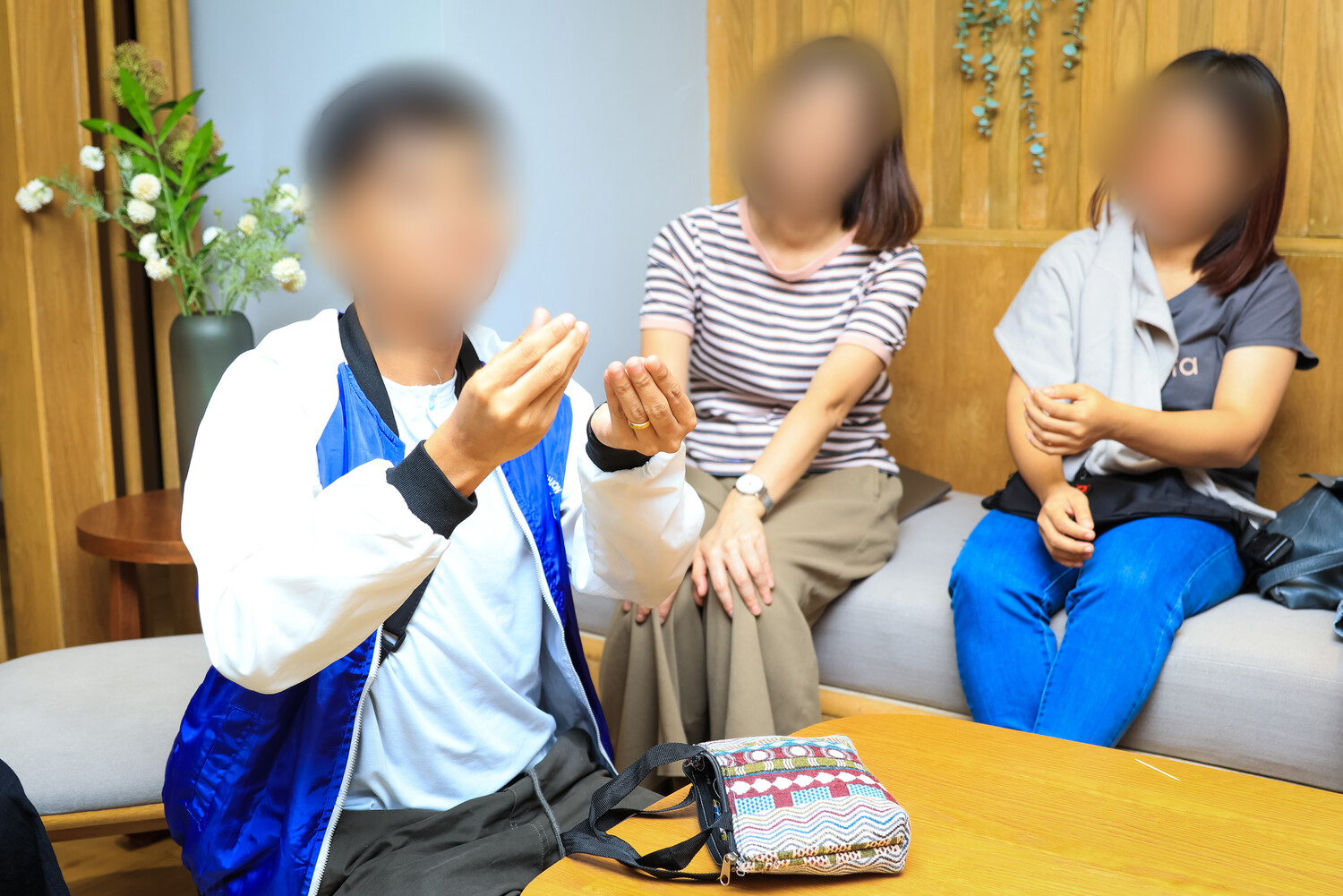To emphasize that Deaf cultures are distinct from hearing cultures, people often write “Deaf” when referring to a linguistic-cultural group, and “deaf” for the audiological condition. This approach is used in this and the following article.
It’s another busy lunch hour in the dimly-lit, second-floor restaurant of the Mii Hotel in Bangkok. All the sounds you might expect are present: the clang of steam trays, the click of chopsticks, and the clink of ice cubes in cold drinks being slurped down by thirsty diners looking for some relief from the tropical heat. Music plays over the stereo system, chairs scrape in and out, and oil sizzles in the woks behind the kitchen doors. All the sounds are there, except the low, underlying thrum of human voices: no one is speaking.
That’s not to say that conversations aren’t happening: they are, in abundance. But the medium for communication is hands, not voices. The diners in the restaurant are attendees at the annual Asia Pacific Sign Language Development Association (APSDA) conference, and they’re conversing with friends and colleagues in a myriad of sign languages.
The APSDA conference takes place annually in Southeast Asia, and participants from Japan, Korea, Mongolia, Philippines, India, Indonesia, Thailand, Jade Star Country,* Jamaica and a number of restricted access countries are all in attendance this year. It’s an opportunity for translators to swap notes and to receive training in exegesis, EthnoArts, and technology. Perhaps most importantly, it’s a chance for teams working in often difficult and isolating circumstances to encourage and connect with each other.
Mutual encouragement
The kitchen stops filling the steam trays: lunch is over, and the next session is about to begin in the hotel’s main-floor ballroom. It’s a Covid-19 debrief, and each team is tasked with preparing a skit to demonstrate their experience of the pandemic. The workshop leader gives instructions using a sort of APSDA hybrid sign language, a set of signs that longtime teams in the Asia-Pacific region have developed over years of working together. Sign languages can be as different from each other as spoken languages, so the creation of linguistic common ground is tremendously helpful.
Translation teams new to the conference are clearly a bit lost as they try to keep up with the new-to-them signs, but fortunately, the dramatic gestures and facial expressions inherent to skits gloss over the comprehension gap. Soon, the whole audience is laughing and nodding along as the actors mime the frustration of mask mandates, dropped video calls, isolation, and monotony. It’s as though the room collectively exhales.
“I was touched when we talked about Covid,” signs Mr. Drawing,** a member of the Jade Star* team. “We cried and laughed. . . . I thought it was only Jade Star Country* and myself that had those difficult feelings, but that’s not so.”
Common misperceptions
The pandemic was a particularly difficult period for Deaf translation teams. But even during more typical times, they experience isolation and misunderstanding from the hearing world, including from missions organizations and donor churches. A common assumption is that the Deaf can read, and so they already have access to Scripture through printed Bibles. But written language is based on vocalized sounds, so it’s a foreign language to the Deaf. Many people also assume that all Deaf sign the same language; and if they don’t, perhaps they should.
“If I told you that everyone in the world should speak English, we would say that’s really oppressive. . . . ” says Sarah,* a consultant with SIL’s Global Sign Languages Team. “It would be easier if we all spoke the same language and signed the same language. But it also gets rid of the beauty God created in the diversity.”
Receiving hope
Though the challenges are substantial, it is clear from the joy on the faces of the participants that God’s grace is bigger than the obstacles they face.
“I felt that God was among us as I saw other people speaking the Word of God. This is God’s work, and I am amazed to see it,” signs Ms. L,** a member of the Jade Star team.
The pandemic debrief in the ballroom wraps up, and the attendees filter into the lobby, debriefing with friends, and queueing for a mid-afternoon coffee before the breakout sessions begin. The underlying thrum of human voices may be absent, but God is very much present.
*Pseudonyms
**NAME SIGNS
Most Deaf adopt a name sign rather than signing the letters of their given name. The name sign might represent a physical attribute, personality trait, or skill, and it’s typically a choice made communally with other Deaf. Hearing people who interact with the Deaf may be gifted with a name sign, but it’s not something they can choose for themselves.
